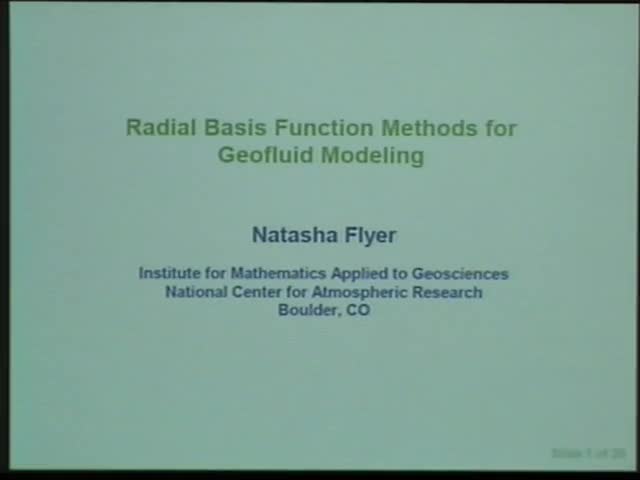Radial basis functions for geofluid modeling
Presenter
April 13, 2010
Keywords:
- Finite difference methods
MSC:
- 65L12
Abstract
Keywords: meshless methods, radial basis functions, geosciences
Abstract: The most classical approach for solving PDEs numerically is finite difference methods (FD). Although they are easy to implement, their accuracy is often low. In contrast, pseudospectral methods (PS) can give spectral (exponential) convergence but suffer from severe geometric restrictions. On the other hand, radial basis function methods (RBF), based on expansions of translates of a single radially symmetric function, combine algorithmic simplicity with spectral accuracy while generalizing to arbitrary node layouts. Since they do not depend on any grid, RBFs allow for high geometric flexibility, permitting local node refinements in critical areas. Only within the last few years have they been applied to non-trivial PDE systems, illustrating their potential in the geosciences. Here, the application of the RBF method to three common geoscience benchmark cases of increasing complexity will be discussed. The first case is idealized cyclogenesis, which models the wrap-up of vortices as they traverse the sphere. For this case, we will also show the simplicity of implementing local node refinement. The second case is unsteady nonlinear flows described by the shallow water equations. The third case is thermal convection in a 3-D spherical shell, a situation of interest in modeling the earth's mantle. Current research topics focus on developing fast and efficient RBF algorithms that are parallelizable.
